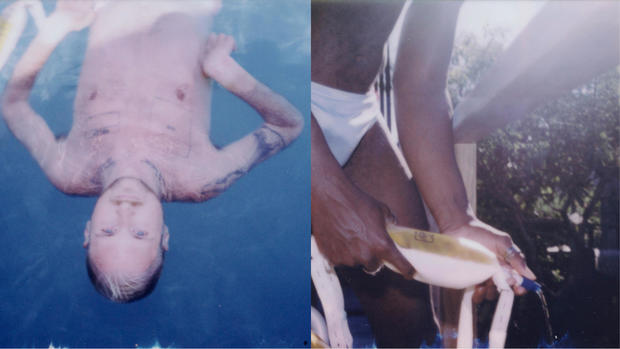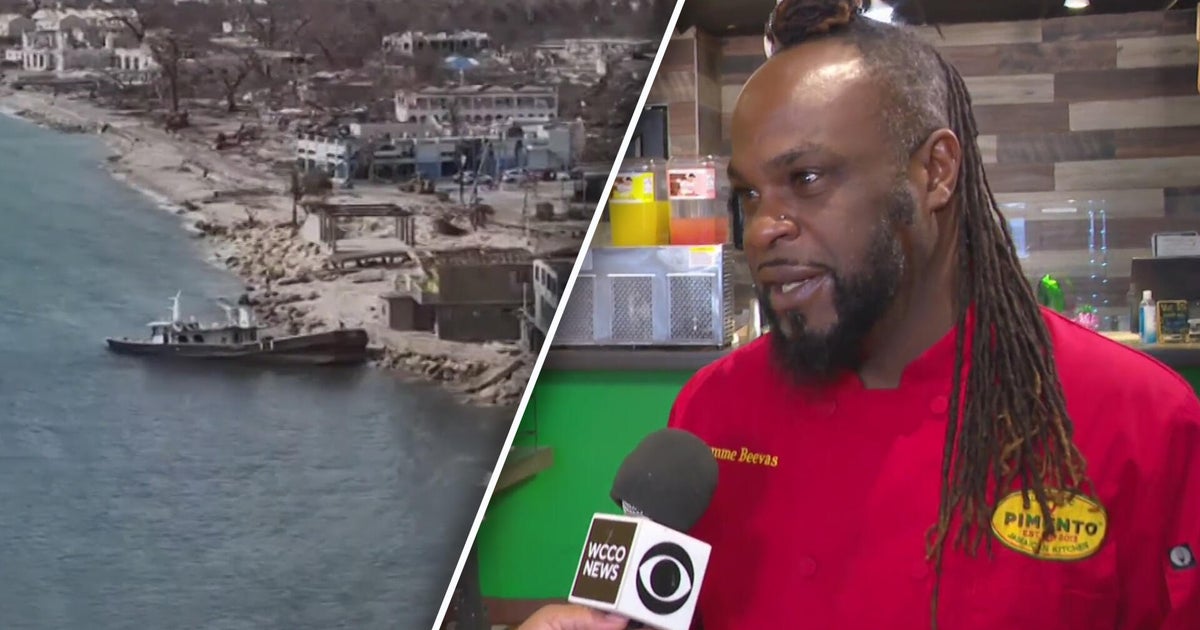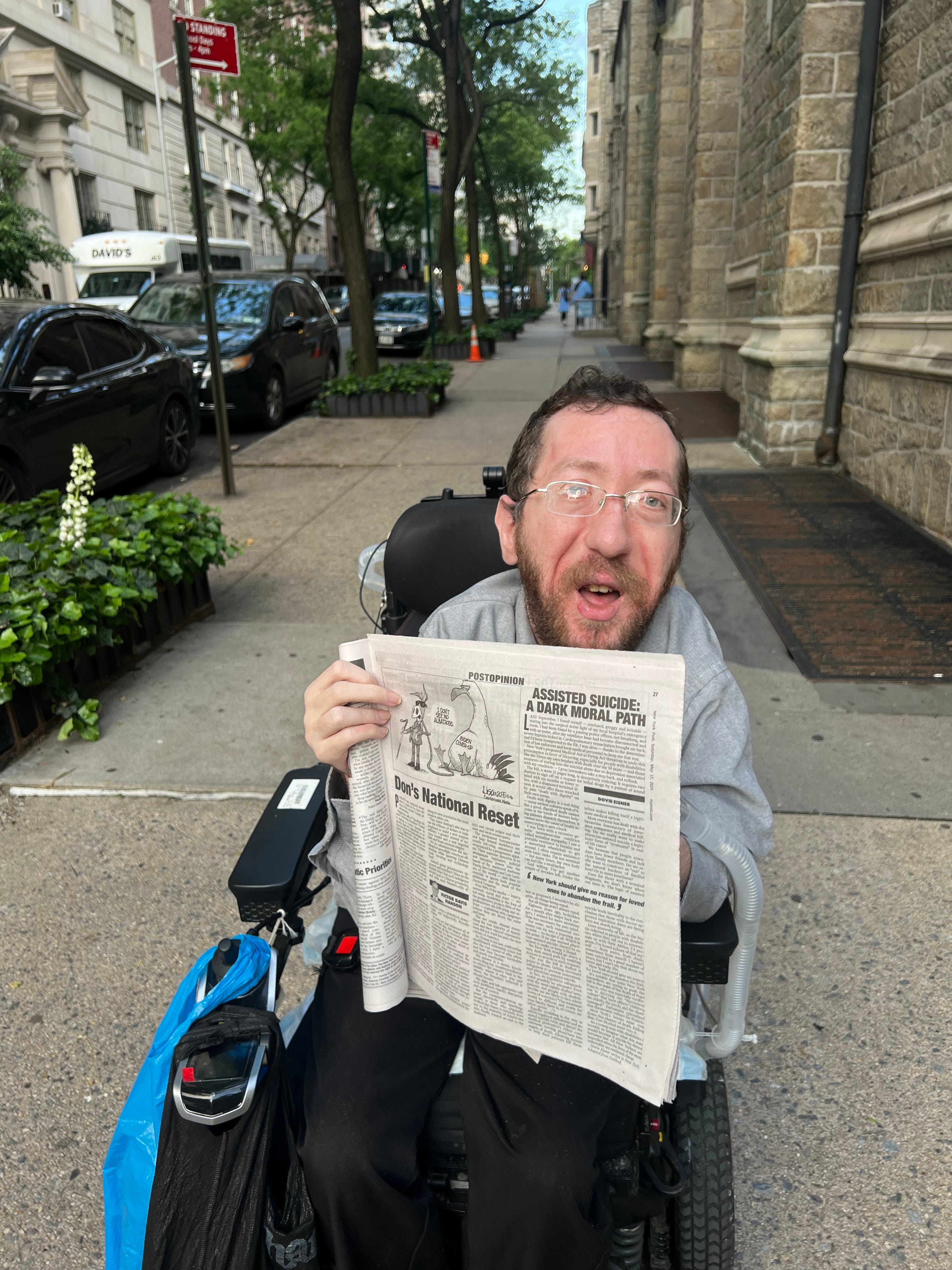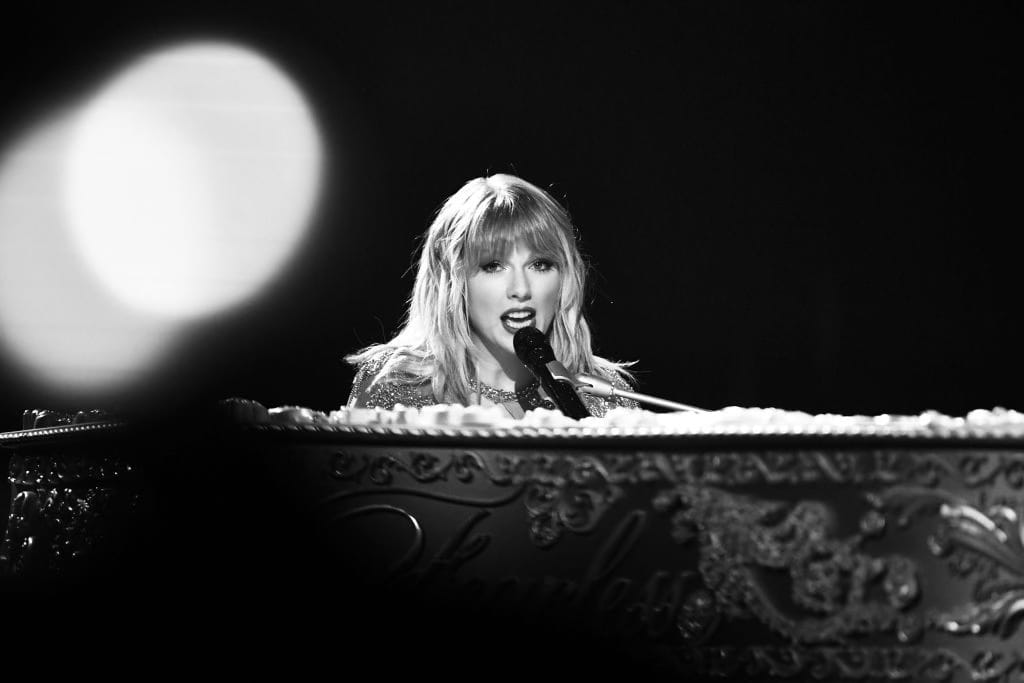"Disabled" is often seen as a bad word. People with disabilities are working to flip the script.
Disabled isn't a bad word.
That's the message writer Melissa Blake wants to send this Disability Pride Month as she advocates to change people's misconceptions about people with disabilities.
"So often we try to dance around, you know, just the word itself. So people will say 'special needs,' the 'differently-abled,' said Blake. "Non-disabled people try to talk over us or explain our own experience to us."
And when the trolls come for her — Blake claps back. Blake was born with a genetic bone and muscular disorder called Freeman-Sheldon syndrome. Its symptoms can include abnormally flexed joints, spine abnormalities and a characteristic facial appearance, and she's had 25 surgeries to fix her joints — including spinal fusion surgery.
And she went viral in 2019 for her response to trolls who told her not to post any more photos of herself. Telling her own story pulled back the curtain on the treatment disabled people often face.
After all, she says, no one knows what it's like to be disabled better than those with disabilities themselves.
"Disability is seen as this tragic, awful thing," she told CBS News. "Disability Pride Month gives us the opportunity to flip that script … and to show up authentically and to be ourselves."
Her story is part of the fight for community, inclusion, and acceptance highlighted by Disability Pride Month, which started in 2015 to commemorate the landmark Americans with Disabilities Act's 25th anniversary.
"Disability pride, means to me, survival — sometimes out of spite, sometimes I've had no other choice," Imani Barbarin told CBS News. "But it means that we have made inroads in the society in which we are living."
Barbarin was born with cerebral palsy, the most common motor disability in childhood, with 1 in 345 children diagnosed, according to the Centers for Disease Control and Prevention. It is all about how the brain sends messages to the rest of the body — so it affects each person differently. For her, she uses crutches to move around.
As a disability and inclusion advocate, Barbarin writes, speaks, and creates content about disability. Under "Crutches and Spice" on social media, she sheds light on disability rights, inclusion and racial justice.
She remembers a lack of representation growing up.
"I really wanted more representation of disabled people that look like me, that had my experience," said Barbarin, who is Black. "And so I really wanted to write about my experience."
But she soon found a "welcoming and loving" disability community that reflected her experiences back at her, embracing her with open arms — even when society at large, sometimes, doesn't.
"The more I started studying and observing and listening to the Black community, the more I realized just how hand-in-hand ableism and racism go together and how different communities reflect these stereotypes onto Black disabled people," she said.
Her hashtag #MyDisabledLifeisWorthy went viral earlier this year with thousands of responses after CDC director Dr. Rochelle Walensky said that among the vaccinated, it's mostly those with comorbidities who are dying from the virus — leaving many with disabilities outraged.
"Ableism is a living, breathing system that we encounter every single day," Barbarin said. "We have a responsibility to combat it, to fight it, and to understand ableism is to understand so many other marginalizations as well as how ableism is used against us."
With a resurgence of COVID with Omicron variant BA.5 and now monkeypox, Barbarin admits she is still upset with the federal government, adding it "sends a signal that they don't take this seriously."
"Disabled people represent nearly a third of the population — growing more so with COVID," she said, referring to the health problems like fatigue and inability to regulate body temperature that can persist after initial infection known as "Long COVID." "This idea that it's 'just' nice to have disability inclusion is not the truth. Disability inclusion is literally lifesaving."
"We can build a society that is inclusive of disabled people — in a way that impacts all of us — when we include disabled people in the conversation, Barbarin said.
Photographer Robert Andy Coombs set out to do just that, exploring the intersections of queerness, disability and sexuality with his art — usually with vivid self-portraits.
He always had an interest in photographing his body. During his third year at college, he was on a trampoline to shoot a series called Fly/Fall. A week later, Coombs was back on the same trampoline. This time, he suffered a spinal cord injury that left him paralyzed in his legs, torso and hands.
While spending a year at home recovering, he still had his photographic eye — but what could he photograph? But he recalled how much his parents were worried.
"They just saw all of my hopes and dreams just kind of wither away, which was the complete opposite from my experience,'' he says. "I was like, 'OK, well, minor setback. I need to rebrand.'"
He quickly realized he was sitting on a gold mine of imagery and he was determined to push the boundaries of what can be achieved with such a life-changing disability — with the help of others.
In one series, "Traversing Pride," photographs are taken during a gay Pride event at his eye level — from a wheelchair. He says it was tough maneuvering around and sometimes it felt as though no one saw him — but he definitely saw them.
Coombs spoke about his attendance at a recent Pride event in Miami, where the organizers had set up a disability tent up a hill. Being a wheelchair user, he says it felt "infantilizing."
"It's exhausting for disabled people to try and traverse these Pride events because you're damned if you do. And you're damned if you don't," he told CBS News. "People don't think we exist because we don't feel comfortable in these spaces."
But there's beauty too. In photographs of his recent trip to Fire Island, he's floating peacefully in the water. In another, a friend empties out his catheter.
"There's themes of caregiving, there's themes of love and affection and touch and desire," he said. "I think those are pretty universal to any relationship."
Coombs is featured in Deaf trans activist Chella Man's art exhibition, "Pure Joy," on display at New York City's 1969 Gallery.
The group show, featuring 12 other artists, "acknowledges the persistent tokenization of disabled artists, contradicting this cycle by centering ideologies of pleasure rather than pain," according to a statement from the gallery. "The show serves as a reclamation and celebration of our humanity."
Blake, Barbarin and Coombs don't want anyone's pity or ridicule — and don't want to be objectified as "inspirational" for living with their disabilities. Telling their own stories in their own way is about being proudly, unapologetically human.







